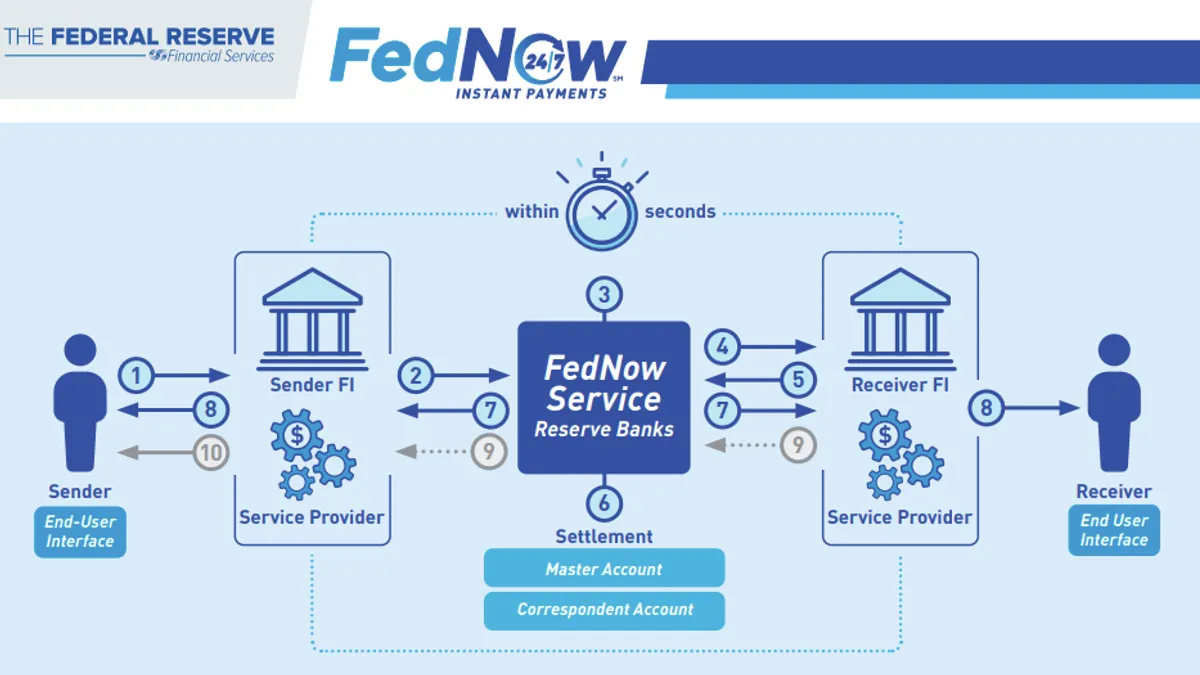Dive Brief:
- Nearly 90% of financial institutions, payments facilitators and other businesses are in the process of implementing the Federal Reserve’s new instant payments program FedNow, or plan to do so in the next two years, according to a survey of 427 industry professionals by the consulting firm Glenbrook Partners.
- Less than 10% said they have no plans to adopt FedNow, according to survey responses gathered between Feb. 8 and March 22.
- The biggest challenge to faster payments adoption, with a 57% tally among those surveyed, was that the services are not broadly available, meaning the system lacks ubiquity and interoperability, according to the results presented Sunday at the Nacha Smarter Faster Payments conference in Las Vegas.
Dive Insight:
The Federal Reserve is in the process of testing the new instant payments system and plan to make the new system live with some early participants in July.
“We see some incredible interest in FedNow,” said Elizabeth McQuerry, a Glenbrook partner who presented the results during a panel at the Nacha conference Sunday.
The biggest potential use case for faster payments systems was in person-to-person payments, with 49% citing that purpose, the preliminary survey results showed. Following that, 46% of respondents said they were also interested in the systems for payment disbursements, and 45% said bill-pay purposes.
Business-to-business use hasn’t been as popular, but the demand for that kind of implementation will likely grow after P2P adoption picks up, Tristan Thompson, a director at Arvest Bank, said during the panel discussion.
The most “troubling” aspect of the results was the low rating the peer-to-peer payments system Zelle received with respect to companies that plan to implement it in the future, McQuerry said.
Nonetheless, when it came to faster payments systems that had already been adopted, Zelle ranked second, with just under 80% saying they had implemented it, behind only same-day Automated Clearing House payments, which about 85% of respondents said they had implemented already.
The issue of ubiquity as a challenge was similar to findings in prior surveys on the topic, as was the concern about high upfront costs, McQuerry said. The survey was the fourth such “barometer” reading on faster payments that Glenbrook has undertaken in cooperation with the Faster Payments Council. A prior report was issued in 2021.
About 71% of respondents said it was “very important” for faster payments to achieve interoperability with other such systems, according to the results.
The survey said 30% of professionals queried were associated with financial institutions, while about 28% were at payments facilitators, including core bank processors, merchant acquiring processors and fintechs. The remaining respondents were with other payments players and business end-users, among others.
The results were presented at the conference as a teaser to a deeper dive into the results that will be shared in June, McQuerry said. The survey’s methodology was not provided with the initial results.















